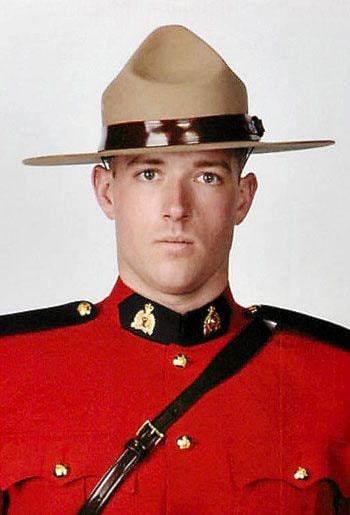Immediately after Const. Michael Potvin drowned, Yukon RCMP stopped using the boat he was in before his death.
It was an older boat, built in the mid-1980s, and had undergone several years of modifications and repairs.
Potvin and Cpl. Brent Chapman had taken the boat out on that July day in 2010 to test it. It was the first time the boat was put in the water that year.
Both officers were trained and certified to operate the boat and set out with life jackets on.
Their first run of the 18-foot Cummings flat-bottom boat was successful - until about one and a half kilometres upstream when the main motor cut out.
Chapman refilled the tank with gas and tried a second and third time to get the motor running properly before deciding to return back to shore.
At some point, the two officers took off their life jackets. Then the boat began to take on a large amount of water and eventually capsized.
Chapman stayed with the boat and was rescued shortly before it sank.
Potvin tried to swim, but he disappeared about 10 metres from shore.
His body was found about two weeks later, nearly 60 kilometres downstream.
Federal investigations into the death found a blockage in the boat’s fuel system that caused the motor to stop, according to a Tuesday police release.
The RCMP has cut the boat from its fleet and suspended the use of other Cummings vessels, until they can be deemed safe. This is one of the “difficult but valuable lessons” learned from this tragedy, the release said.
Human Resources and Skills Development Canada, Transport Canada, and the Transportation Safety Board all conducted “extensive independent investigations” and the RCMP have responded to their recommendations, the release added.
That’s why a coroner’s inquest into Potvin’s death is unnecessary, said Suzanne Duncan, federal counsel for the police agency.
“The real work has already been done,” she said.
A coroner’s inquest into the young officer’s death was supposed to start May 14. But Duncan has asked Judge Karen Ruddy to limit the scope of the inquest.
The RCMP is hired by the Yukon government. But its policies remain federal jurisdiction, said Duncan.
That means a territorial coroner and a jury of territorial residents should not make recommendations about how the RCMP runs, she said.
“It’s a question of line-drawing,” she said. The only recommendation an inquest jury could legally make, according to Duncan’s submission, would be to remind the public to wear life jackets.
And the Yukon’s Coroners Act doesn’t allow juries to make recommendations, Duncan asserts. And any recommendations, if made, would not be legally binding, she said.
Duncan insisted the federal police agency is not shirking public oversight, said Duncan. That’s why three federal agencies conducted independent investigations, she added.
“It’s not like we’re trying to hide anything at all,” said Duncan. “That’s part of the reason why this press release has been posted, and it’s not going to be the last.”
But Duncan couldn’t really answer why the RCMP only released the findings now - after a coroner’s inquest was initiated.
Perhaps it’s because some of the federal investigations wrapped up as late as February, more than a year and a half after Potvin’s death, she said.
And maybe the police wanted to release it for the start of the boating season, as it provides important information for all boaters, not just the police, she added.
Tuesday’s release doesn’t address the 24-pound utility belts officers are required to wear. Potvin wore one when he drowned.
But nothing stopped Potvin from unclipping the belt to help him swim, said Sgt. Don Rogers. If the belt’s weight jeopardized an officer’s life, he or she would not be penalized for taking it off, Rogers added.
Following the investigations, the RCMP has introduced mandatory checklists to follow while using water equipment.
These checklists emphasize the importance of life jackets. These lifejackets are tested to keep a fully-equipped officer afloat.
The force also committed to more training and better communication with local residents about waterways and water safety.
And the RCMP and Transport Canada conducted an inspection of the force’s boats. A total of six vessels were deemed too old and were replaced, the release said.
On Wednesday morning, Yukon’s chief corner Sharon Hanley said that she intends to continue with the inquest.
The only thing that could stop her plans would be Ruddy’s decision on the federal counsel’s submission, which isn’t expected before the end of June.
Contact Roxanne Stasyszyn at
roxannes@yukon-news.com
